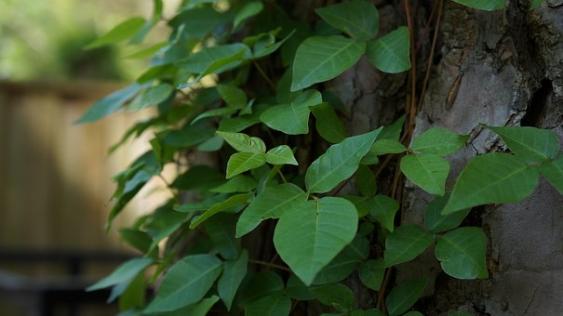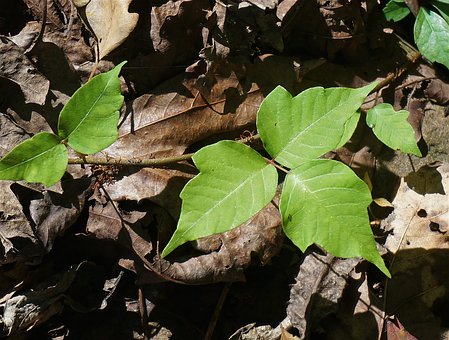Poison Ivy. Pixabay photo
How to Identify the Poison Ivy Plant
The leaves are the best ways to identify poison ivy. Poison ivy has compound leaves, which means that each leaf is comprised of three pointed leaflets. The middle leaflet has a much longer stalk than the two side ones. The shape, texture and color of the leaves changes in each season. Leaves are reddish in spring, green in summer and orange, red or bronze in the fall. The oil, urushiol, contained in this plant is what gives the leaves a glossy, waxy appearance. Remember this saying. “Leaves of three, let them be.”
The plant grows as a vine, a small freestanding plant or as a dense shrubby thicket which may reach over five feet.

Poison Ivy growing on tree. Pixabay photo
Where do you find Poison Ivy?
Poison ivy grows in woods, fields, along roadsides and trails, riverbeds, near fences and just about anywhere across the United Sates, Canada and Mexico.
Exposure Facts
- The urushiol oil is what gives your body the skin rash. This oil can stay active on any surface (dead plants, garden tools, etc.) for a lengthy time. Urushiol is found year round in all parts of the plant including the roots, stems, flowers and leaves.
- Only 1 nanogram (billionth of a gram) is needed to cause a rash.
- Smoke from burning poison ivy can cause irritation.
- A rash may develop between 4 hours and 2 days after contact. Everybody’s skin is different and the reaction will vary.
Treatment
Immediately after exposure (within 15 minutes) wash exposed areas with cool water. There are FDA approved products available that are topical.
Prevention
Wear long-sleeved shirts and plants when you’re walking in areas with poison ivy.

